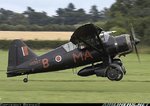Bill,
That different airfoils reach Clmax at different AoA's is irrelevant cause in a max performance turn you're always riding close to the critical AoA and therefore Clmax.
And as for the L/D ratio, that is just yet another form of efficiency factor relating to how much lift you get for every amount of drag. The Cl is also an efficiency factor as it allows you to tell how much lift the wing produces pr. surface area.
Btw, I don't remember ever calling lift-loading an efficiency factor, could you point that out to me ? All I remember is calling it a simple way of accurately comparing a/c percentage wise.
That different airfoils reach Clmax at different AoA's is irrelevant cause in a max performance turn you're always riding close to the critical AoA and therefore Clmax.
And as for the L/D ratio, that is just yet another form of efficiency factor relating to how much lift you get for every amount of drag. The Cl is also an efficiency factor as it allows you to tell how much lift the wing produces pr. surface area.
Btw, I don't remember ever calling lift-loading an efficiency factor, could you point that out to me ? All I remember is calling it a simple way of accurately comparing a/c percentage wise.

